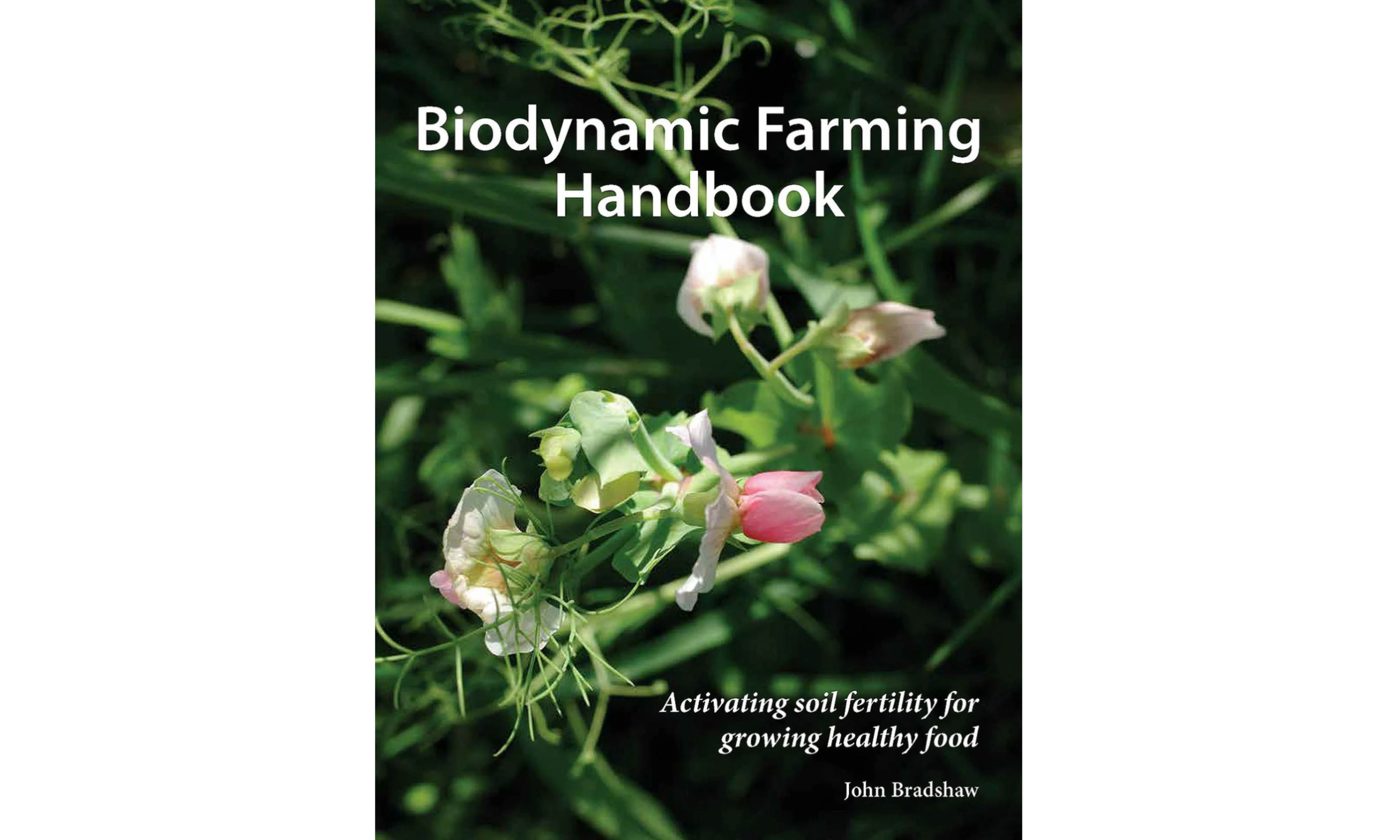
Biodynamic Farming Handbook, by John Bradshaw, is available from SteinerBooks.
Biodynamic Association members can receive a one-time annual 15% discount from Steinerbooks. (Members: log in to view info on our Discounts for Members page.)
By Natalie Brinkley
If you’ve ever wondered why and how biodynamics works (so well), and how to solve common pest and disease issues, read this book. Biodynamic Farming Handbook is for every practitioner, at any scale. The author, John Bradshaw, speaks to how natural it is to farm biodynamically while providing a myriad of practical applications and a wide spectrum of anecdotal and scientifically-based research, both past and present. Bradshaw has nearly fifty years of experience as a fruit and vegetable gardener, including many years (in both conventional and biodynamic settings) with beef and dairy cattle. Therefore, the information provided in his latest publication is from hands-on experience and a wealth of knowledge.
Many liken a biodynamic farmer to an orchestra conductor in that we must use our senses and value the orchestra as a whole to nurture a harmonious production. Bradshaw invites us to further develop our observational abilities—to actively engage with nature and view things as a whole. He goes into biodynamic plants having an “upper plant expression." Is this not so the urpflanze can be realized? This is very similar to the idea that children are born full of everything they need, and it is our role as parents not to spill it.
Active viewing relies on a calm and concentrated "extending out" through the eyes. Those interested can read (and practice) Active Perception, by Alex Podolinsky, 1990.
The Handbook is abundant with useful tips to meet a wide variety of farming operations to include photographs, QR codes to videos, specifications for prep storage boxes, and incredibly valuable spray recommendations—and much more.
- 500 and 501 can be sprayed together (after stirring for one hour) to quickly strengthen plants that are under attack.
- Tea of yarrow, chamomile, nettle, dandelion, or equisetum (and in conjunction with copper and/or sulphur) to strengthen disease resistance effects.
- 501 in combination with Bacillus thuringiensis for caterpillars (and aphids) to decrease excess water in plants.
- Cracks in your wooden prep storage box? Softened beeswax can be used to cover them. Holes in the bottom of large storage containers? Cover the hole with a broken piece of cow horn.
- Recipes for animal husbandry include natural and homeopathic remedies for parasites, wounds, pink eye, mastitis, and many others.
 Natalie is a Certification Specialist for Demeter USA. She brings experience with the Josephine Porter Institute as Gardener/Office Assistant, with Grgich Hills Estate as a sales associate and guest biodynamic educator; and as co-owner of a biodynamic preparation-making and educational business. She has earned Waldorf Teacher and Curative Educator certificates and served as a Waldorf teacher and an organic crop inspector. Natalie enjoys working with like-minded people for a common goal of a more healthy, balanced, and connected way of living. She also enjoys wild-crafting, hiking, dancing to live music, gardening, and playing with her children.
Natalie is a Certification Specialist for Demeter USA. She brings experience with the Josephine Porter Institute as Gardener/Office Assistant, with Grgich Hills Estate as a sales associate and guest biodynamic educator; and as co-owner of a biodynamic preparation-making and educational business. She has earned Waldorf Teacher and Curative Educator certificates and served as a Waldorf teacher and an organic crop inspector. Natalie enjoys working with like-minded people for a common goal of a more healthy, balanced, and connected way of living. She also enjoys wild-crafting, hiking, dancing to live music, gardening, and playing with her children.
